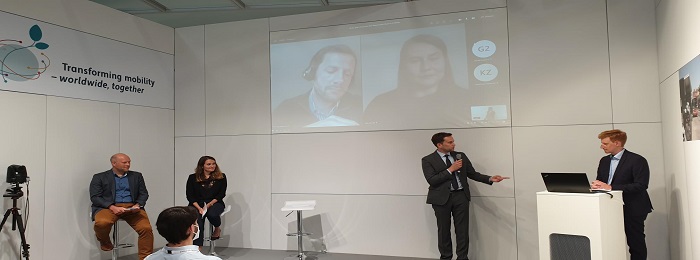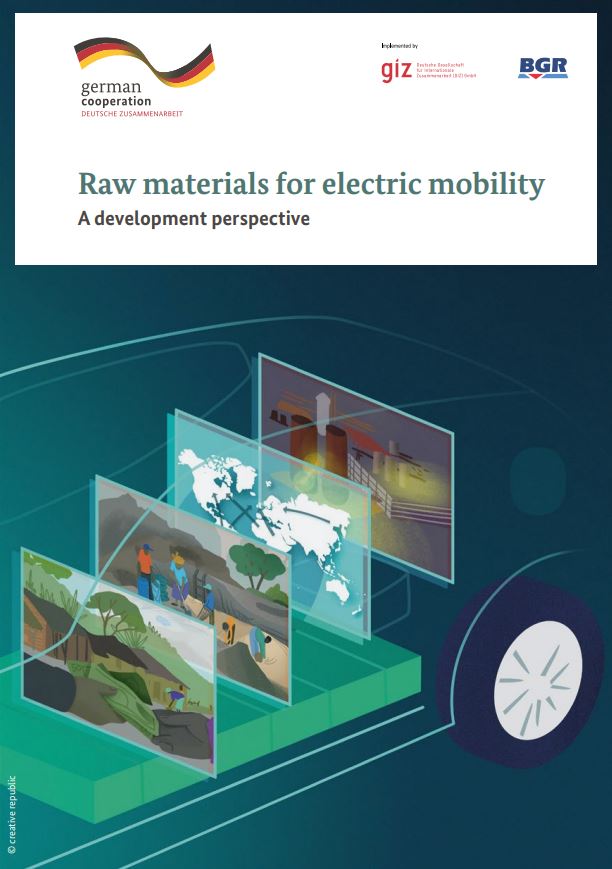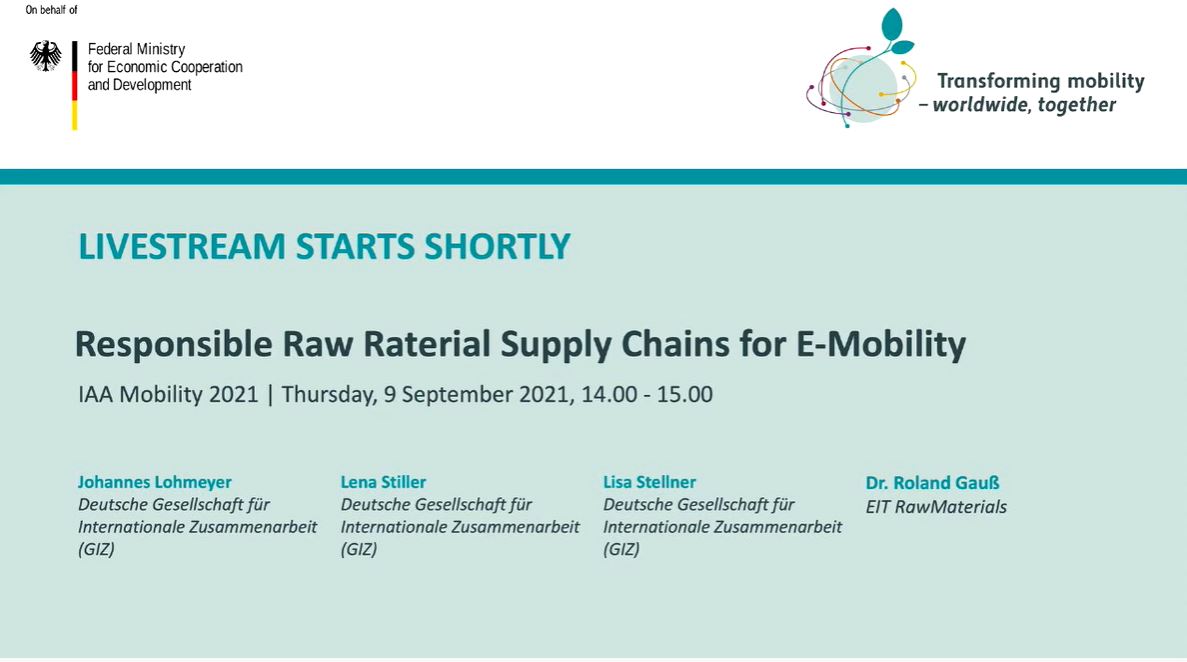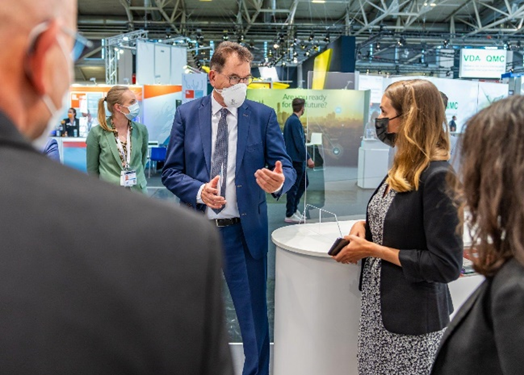X4D at IAA Mobility in Munich
Copyright© GIZ
15.09.2021 X4D goes IAA Mobility: No sustainable E-mobility without responsible raw material supply chains
The IAA is considered as the largest trade show in the automotive sector and in 2021 presented a revised concept with a new location in Munich as IAA Mobility (External link). The IAA no longer sees itself as only a vehicle trade show, but as a mobility platform and dialog forum at the same time. The focus of the show was on electric mobility. Therefore, the necessary prerequisites for e-mobility, such as electricity storage and batteries, as well as the question on the raw materials required were emphasized within this new concept. For sustainability in the transport sector, not only the use of renewable energies is important, but also how the necessary raw materials for the required energy technologies can be supplied and extracted. In the process, the following questions evoke: How sustainable can e-mobility be when an average electric vehicle requires 6 times as many raw materials as a conventional combustion engine? What do these new challenges mean for resource-rich developing and emerging countries, where a large proportion of the raw materials are mined?
X4D discusses responsible raw material supply chains with guests
The Sector Program Extractives for Development (X4D) wanted to draw attention to these questions in a hybrid event on 09.09.2021 in Munich. Right at the beginning of the event, Lena Stiller from the TUMI Initiative made clear: “In addition to a change in our mobility behavior, we need the transport transition as soon as possible. This is the only way we can achieve the reduction of GHG emissions in the fight against climate change. E-mobility has significantly lower emissions over its lifetime compared to conventional combustion engines. However, the central challenge of e-mobility remains the supply of responsibly mined raw materials.” Following X4D gave an overview of opportunities and challenges of the increasing demand for raw materials for developing and emerging countries and presented the contents of the recent publication “Raw Materials for Electric Mobility - A Development Perspective.”
According to the International Energy Agency (External link), by 2030 there could be 145 million electric vehicles on the roads worldwide. Although this is the only way to achieve international climate protection targets, it is important not to lose sight of the raw material requirements and, above all, the origin and therefore producing countries of the raw materials. The production of an average electric car requires 6 times as many minerals as a combustion engine. The production of an electric car needs more cooper, lithium, nickel, manganese, cobalt, graphite, zinc and rare earths whereas a conventional car requires only a mere fraction of copper and manganese. The World Bank also projects an increase in demand for raw materials for renewable technologies, such as the battery raw materials lithium, graphite and cobalt, of up to 500% by 2050, compared to 2018 production levels.
“In the Andean region there are important lithium and copper supplies,” said Nicolas Maennling, Head of the Regional Cooperation for Sustainable Management of Mining Resources in the Andean Countries (MinSus) (External link). But the raw material extraction, brings various region-specific social and environmental challenges (e.g. the still unclear impact on the water balance of lithium mining, as well as the high energy consumption in copper extraction), which are brought to public attention by an active regional civil society and that have to be faced by the mining companies and the industry..
Dr. Roland Gauss, Head of Innovations and Business Intelligence at the European institute for innovation and technology for raw materials EIT RawMaterials (External link), addressed the importance of a circular economy, which is intended to reduce the dependence on raw material imports at EU level in the medium term. Currently, there is still a high dependence on players such as China where the dependence on Rare Earths is up to 80%. In order to counter this dependence and to react to the increasing demand, the EU has set up the EU Critical Raw Materials Action Plan. Among other things, the plan focuses on responsible raw material procurement with strategic international guidelines.
You can find a recording of the session here:
BM Müller interested in the importance of responsible raw material supply chains for e-mobility
BM Müller with Lisa Stellner (GIZ, X4D) at IAA Mobility in Munich, September 2021
The Federal Minister for Economic Cooperation and Development Gerd Müller also took time to visit the GIZ booth at the beginning of the trade fair. In doing so, BM Müller underlined the importance of the bilateral and regional raw materials projects within the German development cooperation. They contribute to supporting the partner countries in achieving the goals of the 2030 Agenda. This could only be achieved, he said, if the local population can also benefit from the extraction of raw materials. For example, through local value creation, transparency and fair wages. In addition, raw material extraction must be environmentally and climate friendly.
The IAA Mobility made clear: The course for a sustainable mobility revolution has been set. However, it is important to create fair raw material supply chains and to draw attention to the development potential of responsibly mined raw materials. There is still a long way to go: from mining, to processing, to production, but also in product design and recycling, the different stakeholders must work together more closely in the future.
For further information please reach out to Lisa Stellner (External link) or Johannes Lohmeyer (External link).



